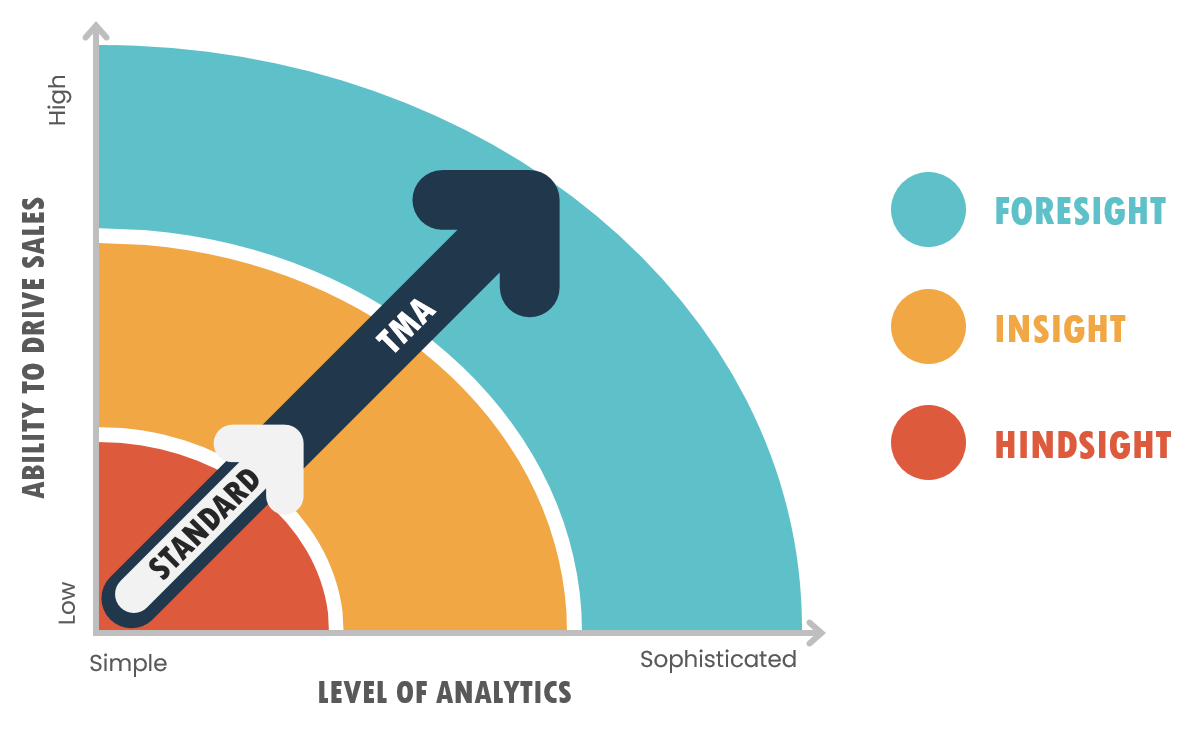Drive Sales by Moving Beyond Standard Reports
One of the simplest ways of driving sales force effectiveness is by arming the sales force with powerful and actionable information that they can use to plan their selling activity. Recurring reports and scorecards are an effective venue for imparting this information as sales representatives are almost guaranteed to look at their reports to track their earnings. However, earnings and similar types of information regarding how the sales representative performed are typically as far as standard reports go—they provide information regarding what has occurred in the past. While such hindsight information is valuable, it has limited ability to help sales representatives plan their future selling activity and, accordingly, has little impact on future sales. Let's explore how innovative life sciences sales reporting can go beyond hindsight to provide insight and foresight that the sales force can use to drive sales.
What are Hindsight, Insight and Foresight?
For the purposes of life sciences sales reporting, hindsight refers to reporting elements that provide information regarding what occurred in the past, such as past sales and performance. Insight refers to reporting elements that provide details regarding prescriber and market information, such as how loyal a prescriber is to competitive products. Foresight refers to reporting elements that offer sales strategies that can help sales representatives plan their future selling activity, such as who will respond best to different levels of selling activity.
When it comes to pharma, biotech and medical device reporting to drive sales, we don’t just want to look to the past, but to the future as well and any information that may help us better understand our marketplace.
Sales Impact
Although hindsight, insight and foresight are all necessary elements of a report due to their unique functions, they possess varying abilities to drive sales, which is often reflective of the level of analytics required to produce the reporting element. As the figure below indicates, hindsight reporting elements require the lowest level of analytics to produce and have the lowest ability to drive sales. Insight reporting elements require more sophisticated analytics than hindsight reporting elements and have a higher ability to drive sales. Foresight reporting elements require the most sophisticated analytics and models, and have the highest ability to drive sales.
Despite the ability of insight and especially foresight to drive sales, most reports do not go beyond providing hindsight. If reports do push beyond hindsight, those analytics are often limited to very basic insight analytics, such as product decile. In order to drive sales, reports for field-level audiences should feature not just hindsight elements, but insight and foresight elements as well.
Conclusion
In the contemporary unpredictable life sciences landscape, it has grown increasingly more important to arm the sales force with the information they need to help them drive sales. Although most reports provide hindsight into the sales that occurred and performance that was achieved, life sciences companies can push past these reactive analytics to provide analytics that offer the sales force insight and foresight. Such analytics not only shed light into prescriber and market information, or insight, but they also offer sales strategies to help the sales force plan their selling activity, or foresight. By incorporating elements into reports that help the sales force understand not only where they came from, but where they’re going and how to get there, life sciences companies can realize increased sales.








